Family: Tenthredinidae
Family common name: common sawflies
Subfamily: Blennocampinae
Tribe: Phymatocerini
Genus: Paracharactus MacGillivray, 1908
Subgenera: none
The Tenthredinidae are the most species-rich family and are found throughout the world, in all continents but Antarctica. They are known as the “common sawflies.” They can generally be recognized by a cylindrical body and long, segmented antennaeantenna:
the sensory organ emerging from the front of the head, usually between the compound eyes and above the clypeus; includes the flagellum, scape and pedicel
 . Otherwise, they come in a variety of colors, sizes, and forms (Goulet 1992Goulet 1992:
. Otherwise, they come in a variety of colors, sizes, and forms (Goulet 1992Goulet 1992:
Goulet H. 1992. The genera and subgenera of the sawflies of Canada and Alaska: Hymenoptera. Symphyta. The insects and arachnids of Canada. Part 20. Agriculture Canada Publication.).
Sawflies in the subfamily Blennocampinae have a diverse set of life histories and habits. Many species are restricted to subtropical and tropical regions, but the genus is still fairly species-rich in North America. Blennocampinae includes many sawflies that feed on ornamental and forestry crops. This subfamily can be recognized by wing venationvenation:
the network of veins on a wing
and bidentatebidentate:
having two teeth; often used in descrbing mandibles or tarsal claws
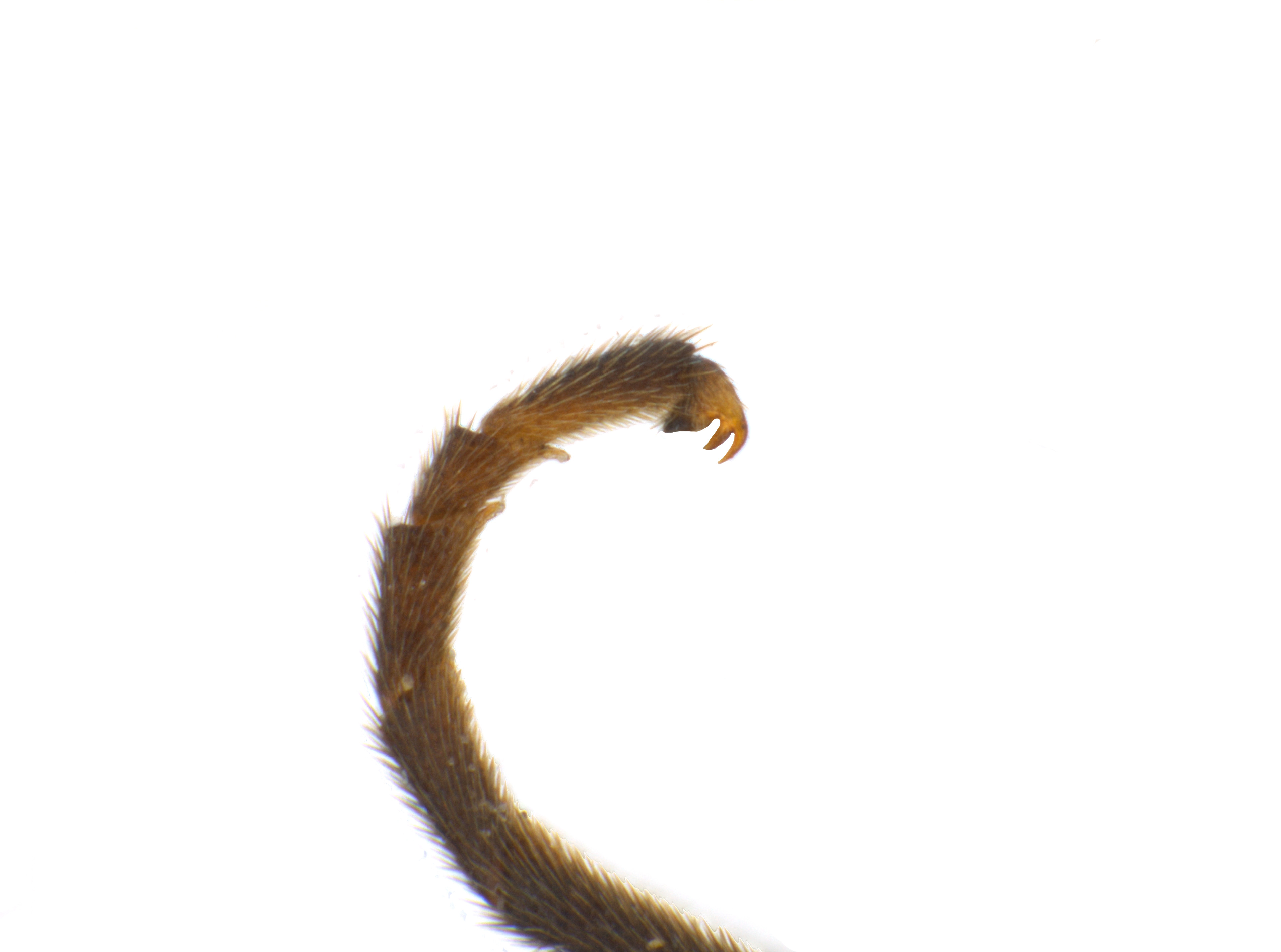 mandibles (Smith 1969dSmith 1969d:
mandibles (Smith 1969dSmith 1969d:
Smith DR. 1969d. Nearctic Sawflies. I. Blennocampinae: Adults and larvae (Hymenoptera: Tenthredinidae). Technical Bulletin, U.S. Department of Agriculture 1397: 1-176.).
Paracharactus are medium-sized, about 6.5–7 mm in length, and mostly black with white or red thoracicthoracic:
of or on the thorax
markings and hyalinehyaline:
transparent; glassy
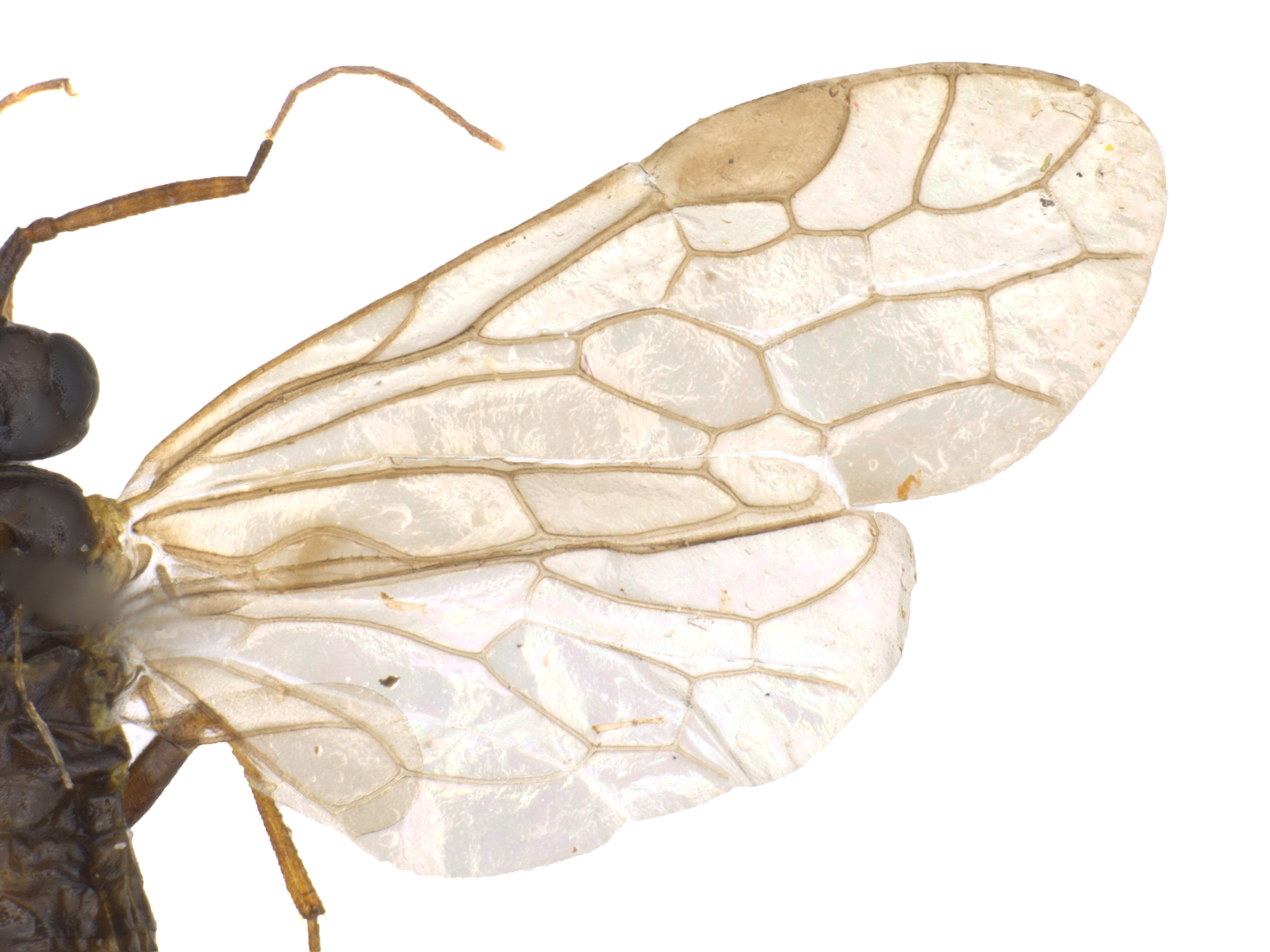 wings (Smith 1969dSmith 1969d:
wings (Smith 1969dSmith 1969d:
Smith DR. 1969d. Nearctic Sawflies. I. Blennocampinae: Adults and larvae (Hymenoptera: Tenthredinidae). Technical Bulletin, U.S. Department of Agriculture 1397: 1-176.).
There are six described extantextant:
in existence; opposite of extinct
species worldwide. Three species occur in North America (Taeger et al. 2010Taeger et al. 2010:
Taeger A, Blank SM, and Liston AD. 2010. World Catalog of Symphyta (Hymenoptera). Zootaxa 2580: 1-1064.).
A key to North American species is included in Smith 1969dSmith 1969d:
Smith DR. 1969d. Nearctic Sawflies. I. Blennocampinae: Adults and larvae (Hymenoptera: Tenthredinidae). Technical Bulletin, U.S. Department of Agriculture 1397: 1-176..
Subfamily characters
 veins Cu1 and 1m-cu between 120°–150° (Goulet 1992Goulet 1992:
veins Cu1 and 1m-cu between 120°–150° (Goulet 1992Goulet 1992: veins M and 1m-cu parallel (Smith 1969dSmith 1969d:
veins M and 1m-cu parallel (Smith 1969dSmith 1969d: veins 2A and 3A incomplete (Smith 1969dSmith 1969d:
veins 2A and 3A incomplete (Smith 1969dSmith 1969d:Genus characters
 appearing almost serrateserrate:
appearing almost serrateserrate: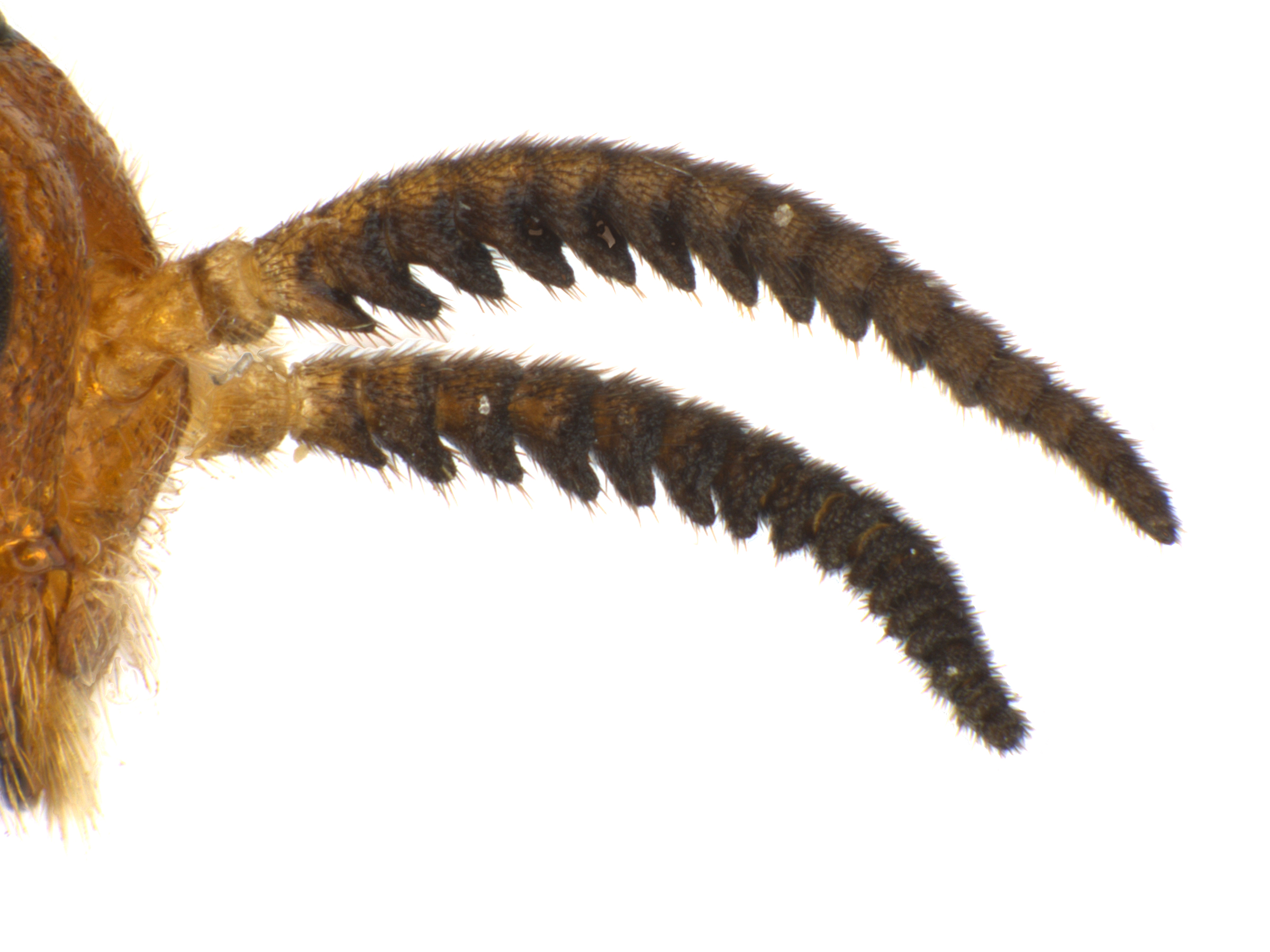 (Smith 1969dSmith 1969d:
(Smith 1969dSmith 1969d: veins 2A and 3A sometimes forked at apexapex:
veins 2A and 3A sometimes forked at apexapex: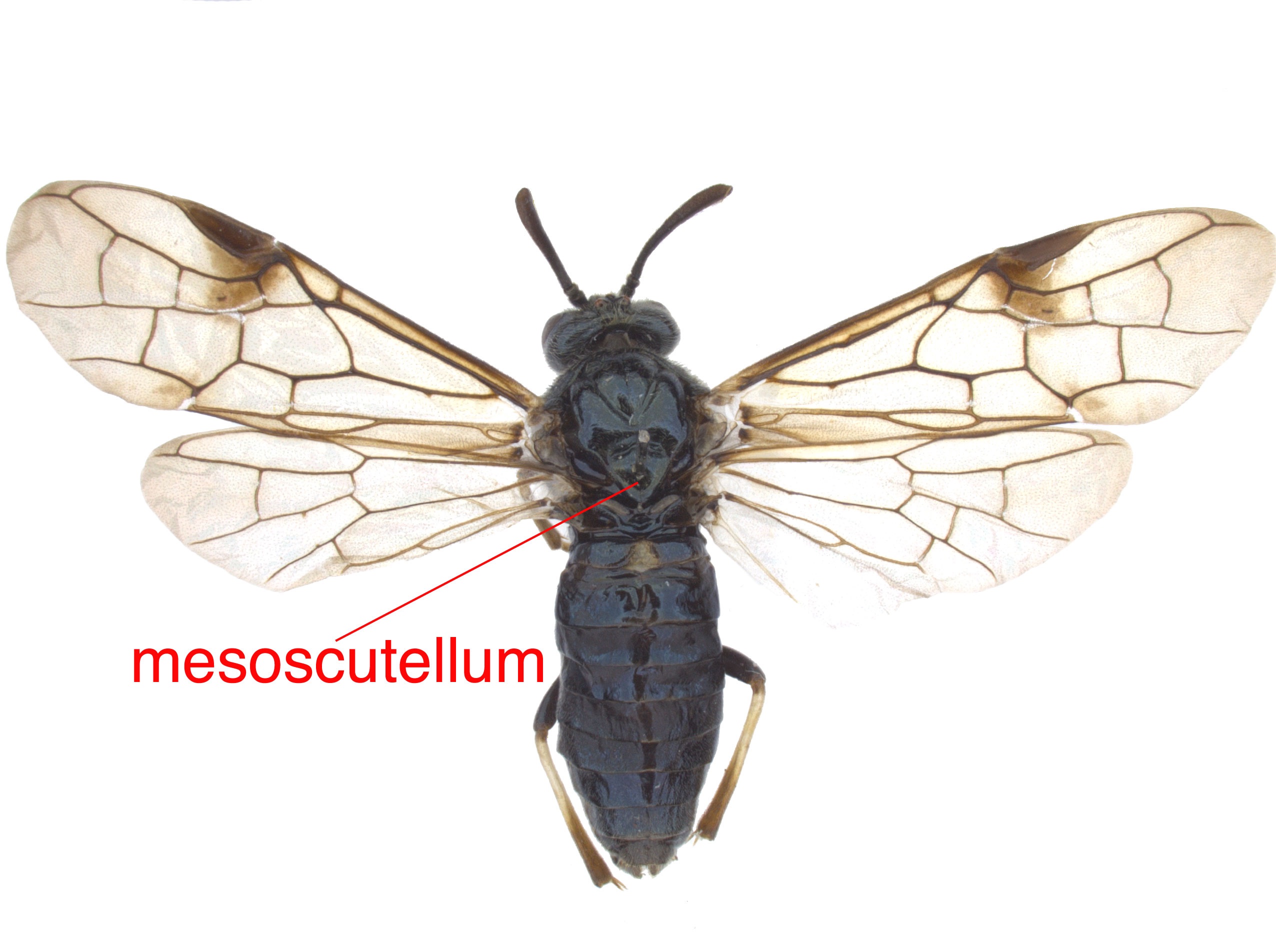 or mesepisternummesepisternum:
or mesepisternummesepisternum: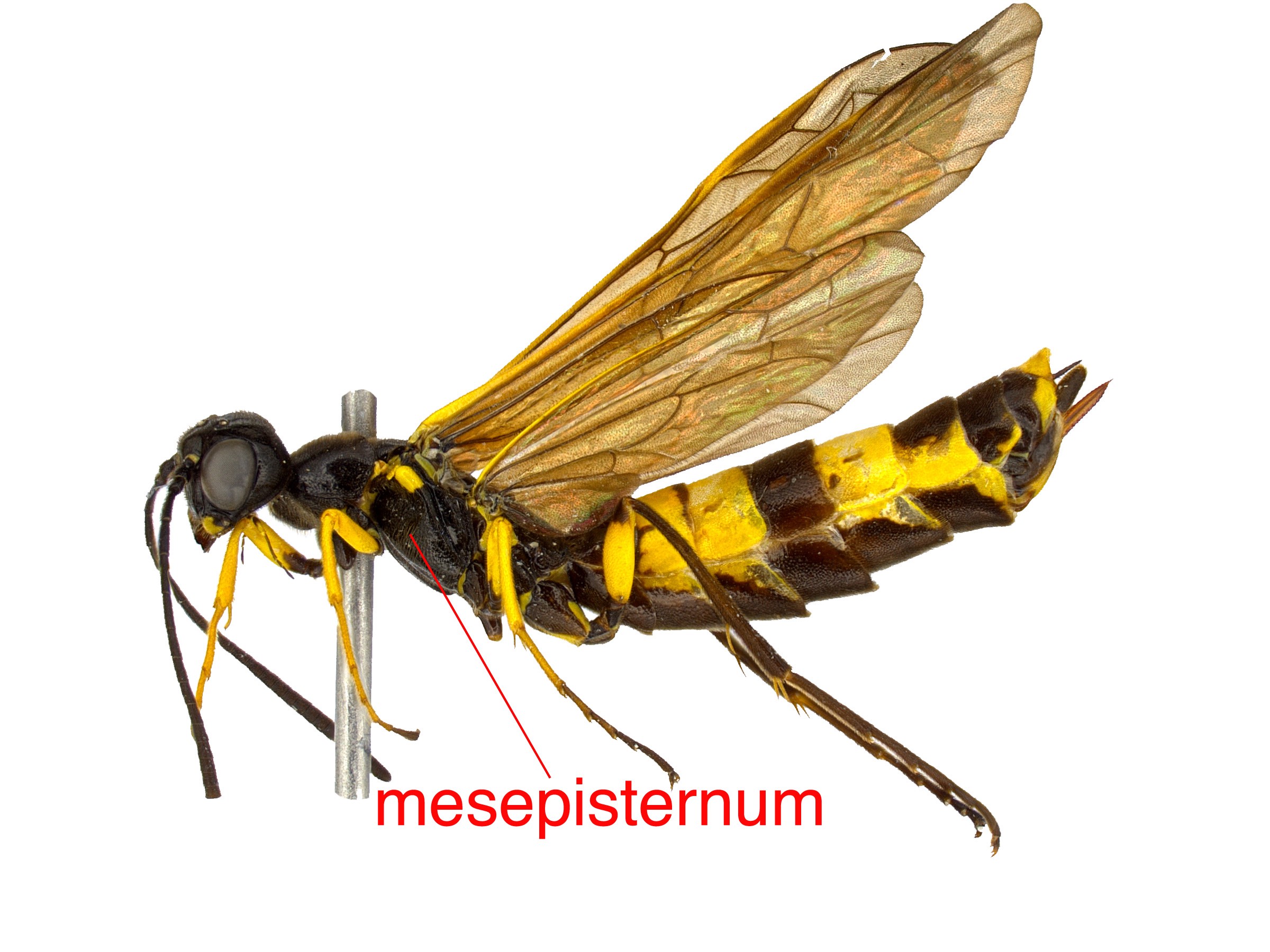 (Goulet 1992Goulet 1992:
(Goulet 1992Goulet 1992: (Goulet 1992Goulet 1992:
(Goulet 1992Goulet 1992: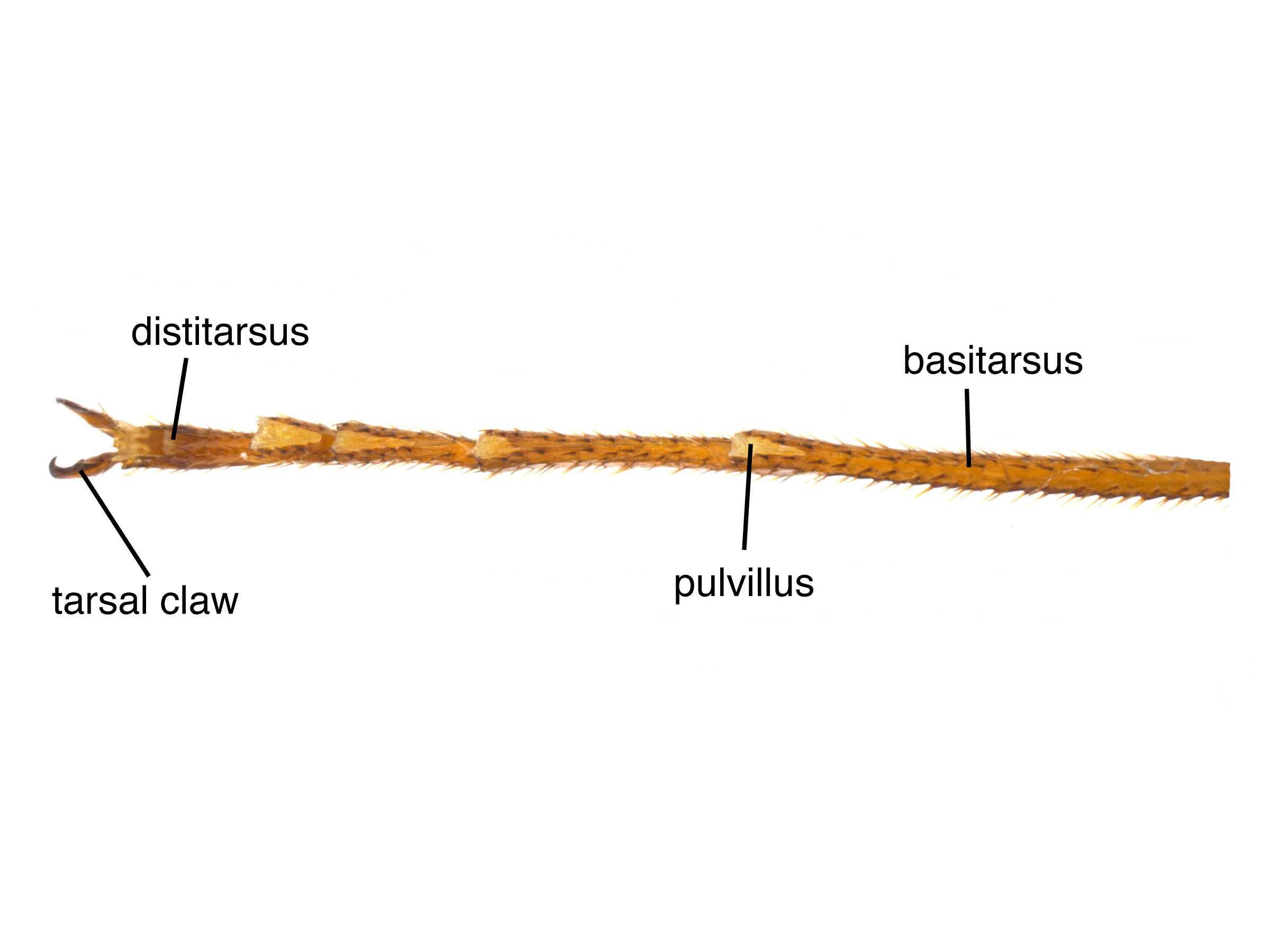 on first hind tarsomeretarsomere:
on first hind tarsomeretarsomere: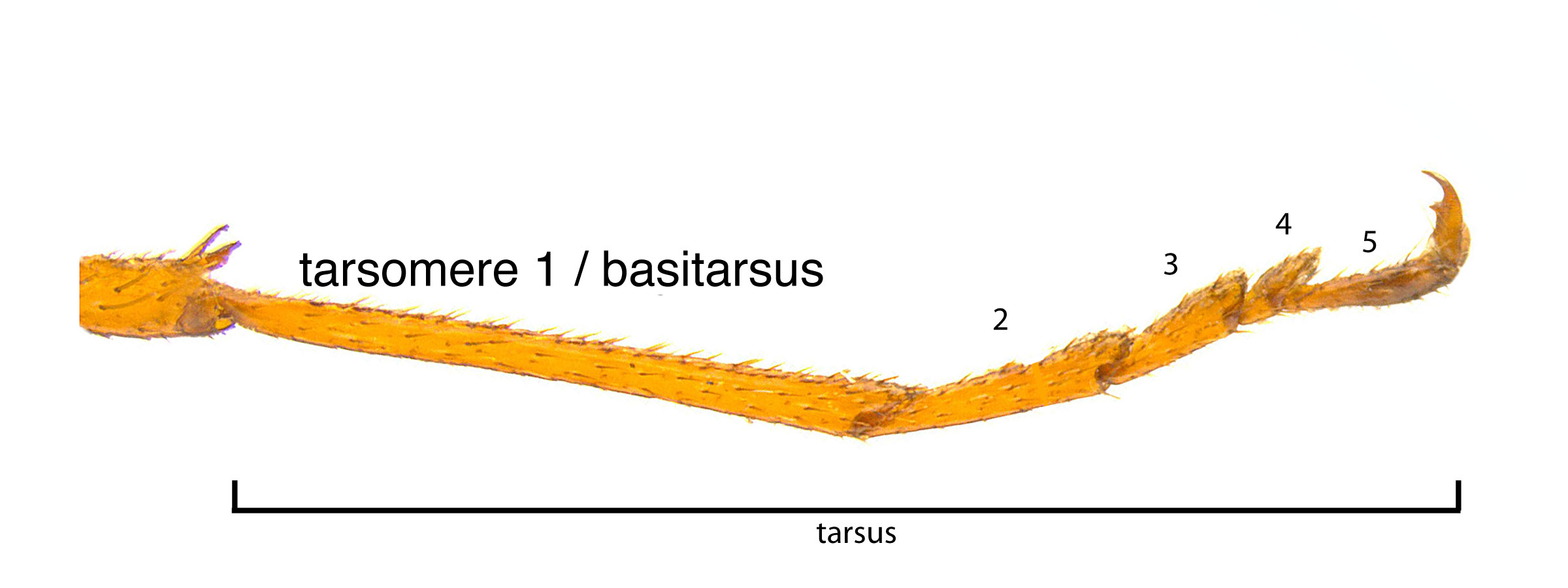 more than two-thirds the length of the second hind tarsomeretarsomere:
more than two-thirds the length of the second hind tarsomeretarsomere: (Goulet 1992Goulet 1992:
(Goulet 1992Goulet 1992: basalbasal:
basalbasal: simple or with short inner tooth (Smith 1969dSmith 1969d:
simple or with short inner tooth (Smith 1969dSmith 1969d: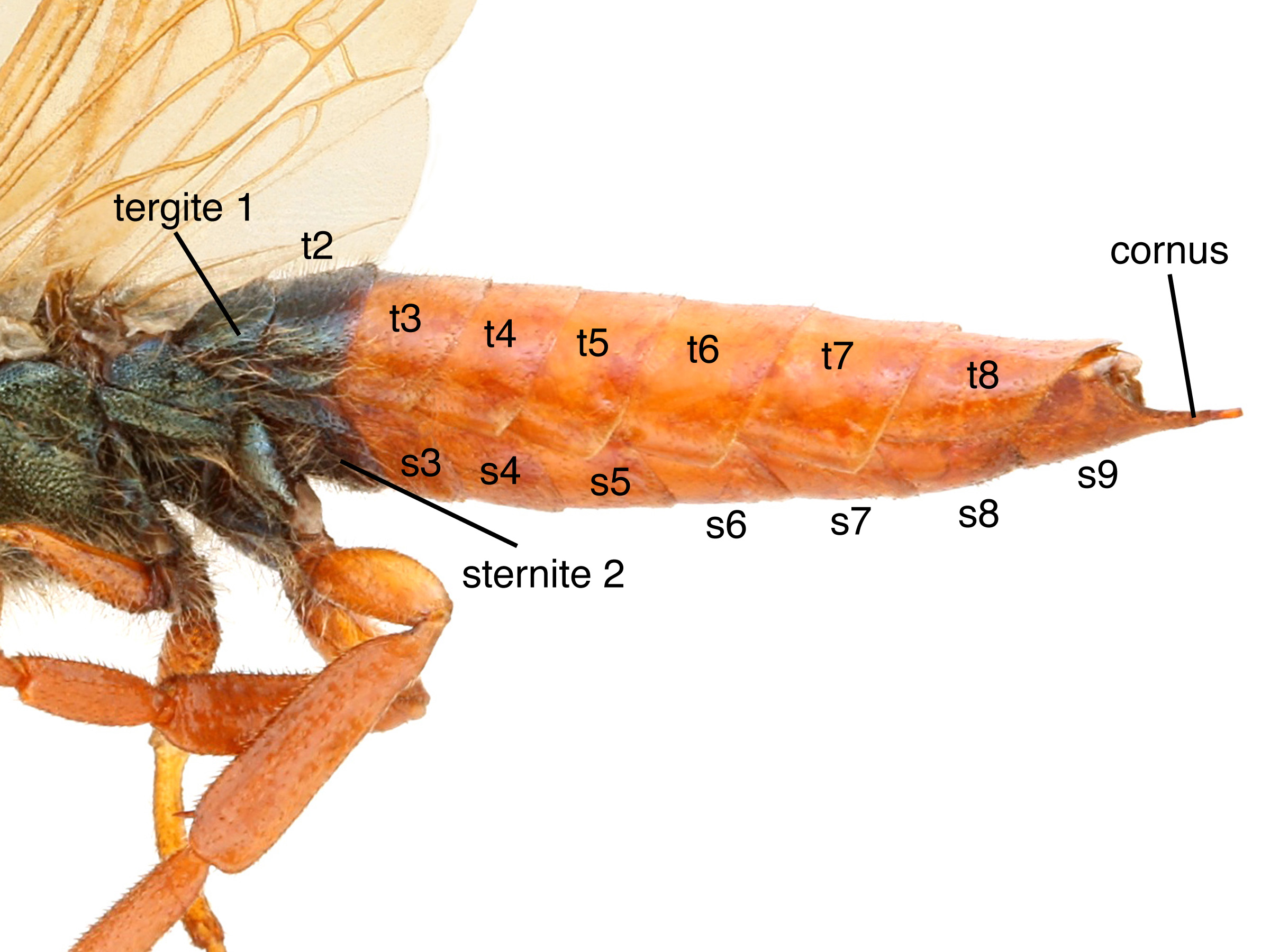 wide medially; membranous area posterior to first tergitetergite:
wide medially; membranous area posterior to first tergitetergite: small (Goulet 1992Goulet 1992:
small (Goulet 1992Goulet 1992:Paracharactus can be confused with similar species in the subfamily Blennocampinae. It can be distinguished from most other genera by the long, developed pulvillipulvillus:
soft pads used for surface adhesion, located in sawflies on the first 4 segments of the tarsus
 on basalbasal:
on basalbasal:
towards the base; closest to the body
tarsomeres and the almost equal in length third and fourth antennal segments. Because of intra-species variation in external characters, Phymatocera and Paracharactus can only be positively distinguished by genitalia characteristics (Smith 1969dSmith 1969d:
Smith DR. 1969d. Nearctic Sawflies. I. Blennocampinae: Adults and larvae (Hymenoptera: Tenthredinidae). Technical Bulletin, U.S. Department of Agriculture 1397: 1-176.).
none
unknown
unknown
World: This genus is known from North America, Central and Eastern Europe, and Japan (Taeger et al. 2018Taeger et al. 2018:
Taeger A, Liston AD, Prous M, Groll EK, Gehroldt T, and Blank SM. 2018. ECatSymmdash;Electronic World Catalog of Symphyta (Insecta, Hymenoptera). Program version 5.0 (19 Dec 2018), data version 40 (23 Sep 2018). Senckenberg Deutsches Entomologisches Institut (SDEI), Muuml;ncheberg. https://sdei.de/ecatsym/ Accessed: 28 Jan 2020.).
North America: Paracharactus has two ranges in North America. Paracharactus montivagus occurs in western states Idaho, Washington, Oregon, and California. The other two species, P. niger and P. rudis, are restricted to east of the Rocky Mountains and occur throughout the northern United States and southern Canada in the east (Smith 1969dSmith 1969d:
Smith DR. 1969d. Nearctic Sawflies. I. Blennocampinae: Adults and larvae (Hymenoptera: Tenthredinidae). Technical Bulletin, U.S. Department of Agriculture 1397: 1-176.).
Map data from: GBIF.org (29 October 2019) GBIF Occurrence Download Paracharactus
Details about data used for maps can be found here.